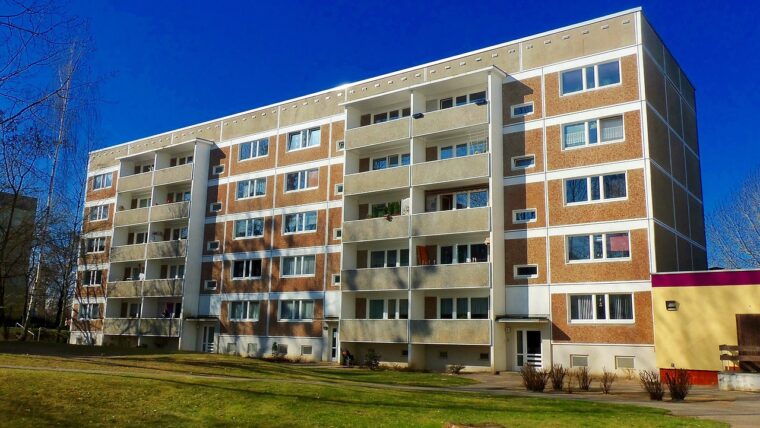In order to give you an idea of the analysis that Banks do for Income Producing Property, take a look at the following cash flow analysis for a 2nd Mortgage request that I prepared a while back, (Names have been changed to protect the innocent)
Cash Flow Analysis for the Utopian Apartment Building
located at 1234 Main St. Anytown, FL.
This analysis retains the 1st Mortgage as per borrowers request
| Gross Rental Income (Less Vacancies) Net Rental Income Less Operating Expenses: Taxes (from 1996 tax return) Insurance (from 1996 tax return) Utilities (from 1996 tax return) Maintenance (from 1996 tax ret. and estimate) LandScape (from 1996 tax returns) Net Operating Income: Debt Repayment: Existing First Mortgage (Competing Bank.$300,000) Our Facility ($500,000 at Prime + 2%) Total Annual Debt Burden | $139,260 ($6,963) $132,297 ($24,178) ($8,040) ($3,744) ($2,500) ($1,380) $92,455 $60,000 56,650 $116,650 |
Debt Repayment Ratio: 0.79X (Insufficient) <- Calculated by dividing NOI by Debt Burden
As you can see the property could not pay the debt. The most important number in the above analysis is the Debt Repayment Ratio ( Net Operating Income / Total Annual Debt Burden ). A smart borrower will know what kind of a debt repayment his property can carry in order to obtain the most money from the Bank. To calculate the maximum loan amount you need to know the answers to the following questions.
1 ) Your Net Operating Income?
2) The interest rate that the Bank will charge?
3) The lowest debt-repayment ratio that the institution will accept (this is usually 1:20X)
4) What kind of an amortization schedule is used for this type of facility.
Let’s use the above information to find out the amount of money that can be borrowed against Utopian Apartments.
We have talked to the loan officer, and he has told us the following:
a) The bank charges Prime + 1% for this type of facilities when it is secured by a first mortgage, and Prime + 2% when it is secured by a second mortgage.
b) The Bank tries to approve loans with a debt repayment of ratio of 1:25X, but the credit policy states that the lowest is 1:20X.
c) The Bank uses various amortization schedules but the most favorable ones for this type of facility are based on a twenty-five (25) year amortization with a seven (7) year balloon.
Armed with that information you do some math:
$92,455 / 1.20 = 77,045 <==== Maximum Debt Burden.
Using an amortization table you find out that $734,000 at 9.5% (Prime+1% as of July 1998) is the maximum debt based on a twenty-five (25) year amortization.
You got in your hands a powerful weapon. With those numbers you could go back to the Bank, and instead of asking for a second mortgage for which your property does not qualify for anyway. You could ask for a 1st Mortgage refinancing in the amount of $734,000 which gets you almost the $800,000 which you were looking for, and lowers the proposed debt burden dramatically. Needless to say, that if the Bank decides to offer you the $150,000 2nd Mortgage that your property does qualify for, you should not take it.
Finding out the Market Value of Income Producing Property
Obtaining a loan without an appraisal is very difficult, expect to have to pay for one (most commercial appraisals are at least $1,000 with the average being $1,500) A professionally prepared appraisal will use all three methods to come up with an estimated value for the property.
There are three methods of estimating a market value for a property.
1) The Cost Approach: This approach adds the cost of constructing the building, deducts the depreciation, adds the value of the land, and adds the value of the improvements. It is used mostly for newer buildings since there would be very little depreciation.
Ex:
| This is the Cost of building Utopian Apartments You add the A/C system & Other improvements You deduct depreciation You add any tax or impact fee Your reproduction cost is You add the land value This is your value | $600,000 100,000 (50,000) 50,000 $700,000 300,000 $1,000,000 |
2) The Sales Comparison approach: Self-explanatory! The appraiser will go around looking for comparable sales, it will assign a certain modifier to each in accordance to how much they resemble the property to be appraise and come up with an average.
3) The Income Capitalization approach: which is the one that concerns you as an investor of Commercial Real Estate is calculated the following way:
You obtain the Net Operating Income for the Property in the case of Utopian Apartments this is $92,455. After that you obtain the capitalization rate which is a combination of the interest that you will pay the Bank, and the required rate of return that you demand for your investment.
You might only pay 9.5% interest on the Bank Loan, but you might require that your investment pays you 10%. You would calculate the Capitalization rate as follows:
9.5% X .75% = 7.13
10% X .25% = 2.50
Cap. Rate 7.13 + 2.50 = 9.63%
Then it is a simple matter of dividing your Net Operating Income by your capitalization rate:
$92,455 divided by 9.63% = $960,072
This is the value of the building, and it is the most you should pay for it in order to obtain

4 thoughts on “Analyzing the debt Repayment ability of Income Producing Property”
Comments are closed.